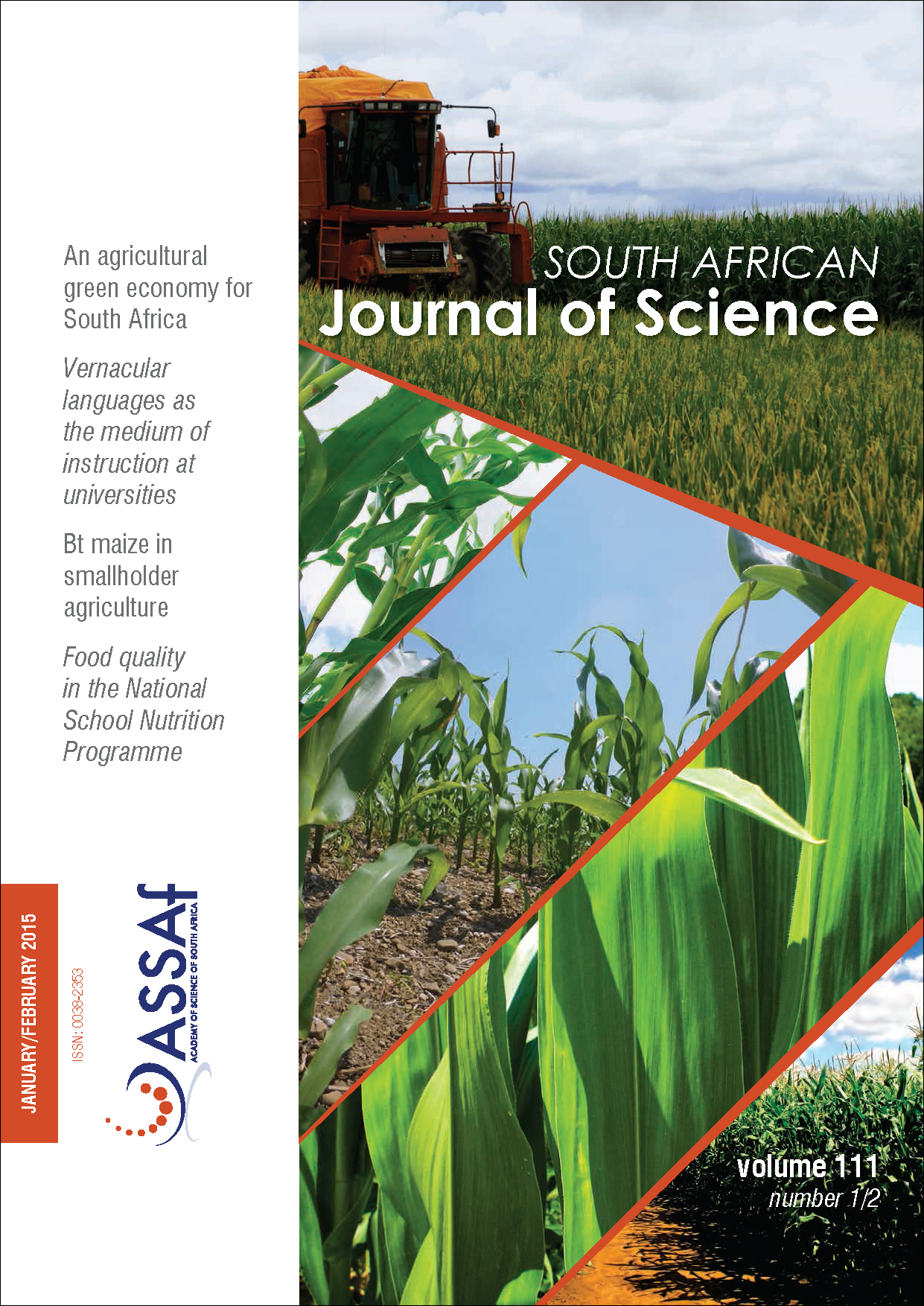Development of pesticide use maps for South Africa
DOI:
https://doi.org/10.17159/sajs.2015/20140091Keywords:
risk assessment, environment, human health, aquatic ecosystemAbstract
Over 3000 pesticides are registered for use in South Africa. Many studies have highlighted the movement of pesticides to agricultural crops from the point of application into non-target environments, particularly surface and groundwater resources. Exposure to pesticides can lead to serious human health and environmental effects. It is therefore important to identify critical areas where specific pesticides may result in a high risk of exposure to humans or the environment. Crop specific pesticide use data were obtained from a market research company and integrated into a geographical information system detailing the distribution of agricultural crops in South Africa as determined by an agricultural census performed in 2002. By estimating the total application of a specific pesticide to all crops produced in a magisterial district, it was possible to generate maps which provide an estimate of the application rate of over 200 pesticides per magisterial district. These maps were intersected with an agricultural land-cover map to provide a refined map giving details of the spatial distribution of pesticide use across the country. These maps are the first of their kind in South Africa and provide a spatial overview of the likely distribution of specific active ingredients based on the distribution of crops throughout the country. While there are a number of limitations and uncertainties associated with the data used to produce these maps, these are not unique to South Africa, and similar methodologies have been applied in more developed countries.
Downloads
Published
Issue
Section
License

All articles are published under a Creative Commons Attribution 4.0 International Licence
Copyright is retained by the authors. Readers are welcome to reproduce, share and adapt the content without permission provided the source is attributed.
Disclaimer: The publisher and editors accept no responsibility for statements made by the authors
How to Cite
- Abstract 893
- PDF 4225
- EPUB 190
- XML 237
- Supplementary Material 169












.png)